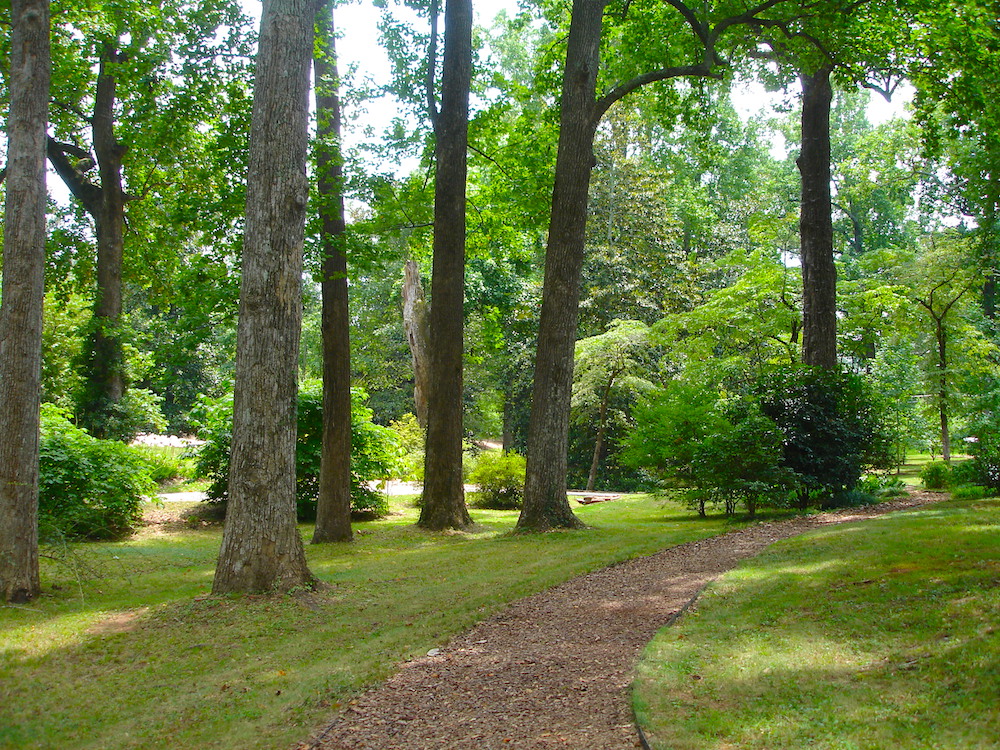“What’s in a name?” asks Juliet in Shakespeare’s oft quoted line from the play where she is the tragic heroine. Her argument is that a name doesn’t really mean that much. “That which we call a rose by any other name would smell as sweet” said she, as Romeo carried the surname of her father’s sworn enemy. Dramatic young lovers aside; however, names are absolutely necessary for a number of reasons. Much more practical is the following observation made by Anne in Anne of Green Gables, “I don’t believe a rose WOULD be as nice if it was called a thistle or a skunk cabbage.” I’m in total agreement with her. What’s more, plant names –both the tongue twisting Latin binomials and the vernacular common ones—add greatly to one’s understanding of the subject when thoughtfully explored. To illustrate this, let’s consider a favorite example from Hills & Dales: the tulip poplar.
Tulip poplar’s botanical name is Liriodendron tulipifera. I remember hearing that for the first time, rolling melodically off the tongue of my favorite professor. He was passionate about plants, particularly trees and would enthusiastically translate the daunting syllables for us so that we could remember and relate to them better. So, in similar fashion, we find that Lirio in the genus was derived from the Greek lerion, meaning lily and combined with the Latin word dendron for tree. The species tulipifera has the Turkish word for tulip “Latinized” and paired with fera meaning wild. So the translation is essentially “wild tulip-bearing lily tree.” In actuality, it has a closer relationship to magnolias than to lilies or tulips, but the tulip reference is easily understood upon seeing the resemblance in their cup-shaped blooms. This characteristic factored into its common name of tulip poplar or tulip tree but there are others as well, such as yellow poplar, white poplar, whitewood, canoewood and fiddle tree. And there again, a bit of delving yields more insight. It is not actually a true poplar, but evidently the similar fluttering of its leaves to those of poplars is responsible for that name. It is called yellow because of its yellow flowers, white poplar and whitewood for the creamy white sapwood, canoewood due to being a favorite candidate for the dugout canoes of Native Americans and fiddle tree for a likeness to that instrument seen in its large, lobed leaves.
Tulip poplar is a superlative native tree, indigenous to the eastern U.S. from southern New England to northern Florida and westward to the Mississippi River. The wood has similar characteristics and uses as white pine and forms straight massive trunks, contributing to its considerable value for timber. Whereas many fast growing trees are weak-wooded, tulip poplar grows rapidly yet is strong, making it highly recommended as a quick shade tree. It typically tops out in cultivation at around 100 feet in height but there are virgin stands in the southern Appalachians that are close to 200 feet with trunk diameters of 8-12 feet! Due to a normal life span of 200 or more years, we have tulip poplars in the groves at the estate that were likely here when Mrs. Ferrell was creating her 19th century garden. We know from documentation that there were many mature ones living in these very woods when Fuller Callaway Sr. purchased this property. One article from The Atlanta Journal dated “Sunday Morning, April 30, 1916” states the following:
The visitor is carried into the gardens through a grove of trees….around the grove in a semi-circle which towers green to the sky are planted tall tulip trees, in lines as orderly and straight as if they were little bushes instead of giant trees.
There is every reason to believe from their girth and stature that several of those giants are still shading our paths and drives to the garden. Truly remarkable and yet, though tall and stately, they are so still and hushed it is easy to take them for granted. I’m convinced that it is a sin to do so, though I realize I have a horticultural bias. But the poets also have an affinity for the majesty of trees. We have a plaque that belonged to Alice Callaway with a quote from M. Aumonier that reads, “There is always music amongst the trees in the garden, but our hearts must be very quiet to hear it.” Reason enough to give these old sentries a second look upwards with a bit of awe and respect, don’t you think?
